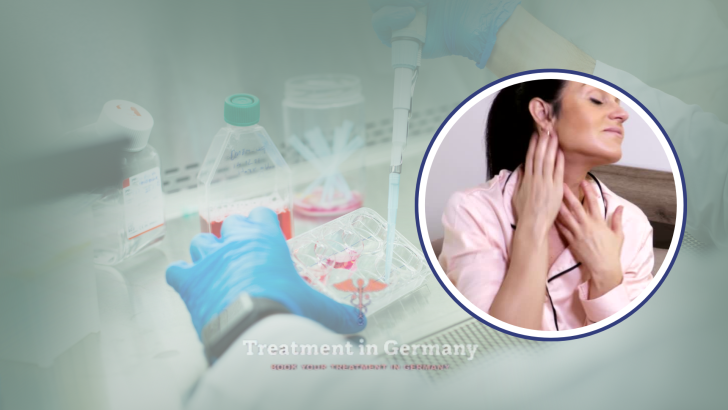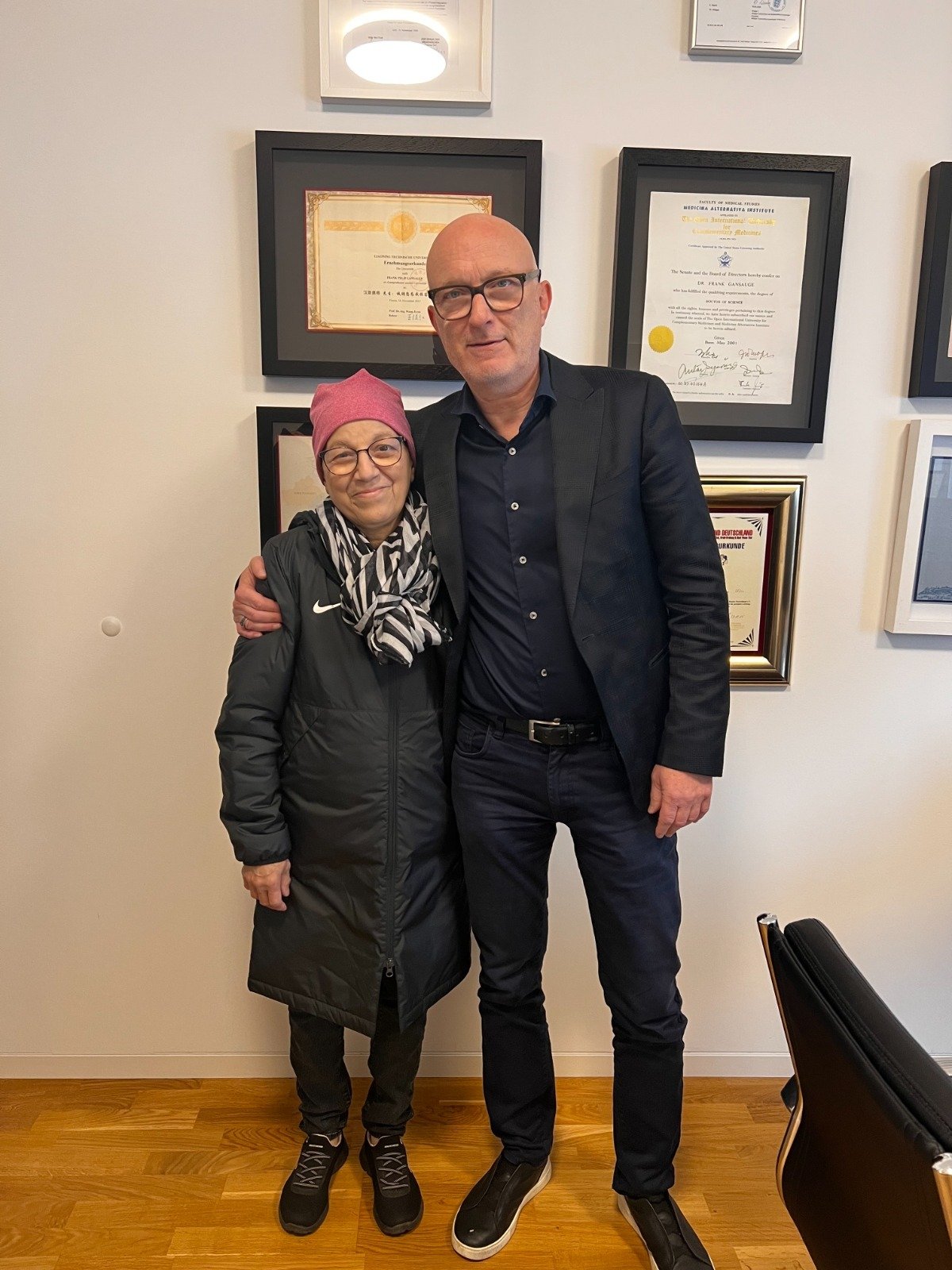
Lyme disease, caused by the bacterium Borrelia burgdorferi and transmitted through infected tick bites, affects over 300,000 people annually in the USA alone.
Lyme disease, caused by the bacterium Borrelia burgdorferi and transmitted through infected tick bites, affects over 300,000 people annually in the USA alone. While early-stage Lyme disease is often treatable with antibiotics, chronic Lyme disease, also known as post-treatment Lyme disease syndrome (PTLDS), late-stage Lyme disease, and conditions involving neurological Lyme symptoms, Lyme disease fatigue, and Lyme disease pain persist in 10–20% of patients, leading to significant quality-of-life impacts. Stem cell therapy for Lyme disease offers a promising regenerative medicine approach, using mesenchymal stem cells (MSCs) to address inflammation, immune dysregulation, and tissue damage.
Lyme disease progresses in three stages:
Early Localized: Erythema migrans rash, flu-like symptoms (fever, fatigue, headache).
Early Disseminated: Joint pain, neurological issues (e.g., Bell’s palsy), cardiac symptoms.
Late-Stage/PTLDS: Chronic Lyme disease with persistent Lyme disease fatigue, Lyme disease pain, cognitive impairment (“brain fog”), and neurological Lyme symptoms (e.g., memory loss, neuropathy).
Stem cell therapy for Lyme disease leverages MSCs, derived from bone marrow, adipose tissue, or umbilical cord blood, to modulate the immune system, reduce inflammation, and repair damaged tissues, offering hope for late-stage Lyme disease and post-treatment Lyme syndrome.
Lyme disease is caused by Borrelia burgdorferi, transmitted via black-legged tick bites. Risk factors include outdoor activities in endemic areas and delayed diagnosis, which can lead to chronic Lyme disease due to bacterial biofilms or immune dysregulation.
Lyme Disease Symptoms
Symptoms vary by stage:
Early-Stage: Rash, fever, fatigue, joint pain.
Late-Stage/PTLDS: Lyme disease fatigue, Lyme disease pain, cognitive decline, neurological issues (e.g., numbness, memory loss), and mood disorders.
Lyme Disease Diagnostic Tests
Diagnosis relies on:
Clinical Assessment: Symptom history, tick exposure.
Serology Tests: ELISA and Western blot for Borrelia antibodies.
PCR Testing: Detects bacterial DNA in synovial fluid or blood.
Neuroimaging: MRI/SPECT for neurological Lyme symptoms.
These tests guide stem cell therapy for Lyme disease eligibility, ensuring accurate diagnosis.
Stem Cell Therapy for Lyme Disease in 2025
Stem cell therapy uses MSCs, which possess anti-inflammatory, immunomodulatory, and regenerative properties, to treat Lyme disease by reducing inflammation, repairing tissues, and balancing the immune response. Unlike antibiotics, which target Borrelia burgdorferi, stem cell therapy for Lyme disease addresses Lyme disease immune response dysregulation, biofilm persistence, and tissue damage, making it a viable option for chronic Lyme disease. MSCs are administered via intravenous infusion, targeted injections (e.g., joints), or intrathecal delivery for neurological issues.
The table below summarizes stem cell therapy options:
|
Treatment |
Mechanism |
Effectiveness |
Side Effects |
|
MSC Therapy |
Reduces inflammation, repairs tissues |
~50% symptom improvement in trials |
Mild fever, soreness; rare infection |
|
Antibiotics |
Targets Borrelia bacteria |
Effective early; limited in PTLDS |
Diarrhea, resistance |
|
Supportive Care |
Manages symptoms |
Variable |
Minimal |
|
Exosome Therapy |
Enhances MSC effects |
Promising in trials |
Rare allergic reactions |
Stem Cell Therapy for Lyme Disease
Stem Cell Therapy Treatment Process:
Diagnostics: Serology, PCR, neuroimaging.
Cell Harvesting: MSCs from autologous (patient’s fat/bone marrow) or allogeneic (umbilical cord) sources.
Administration: Intravenous infusion, joint injections, or intrathecal delivery.
Monitoring: Follow-up for 3–12 months.
Stem Cell Infusion Benefits Lyme Disease: MSCs reduce inflammation, repair joints/neurons, and modulate immunity, improving Lyme disease fatigue, Lyme disease pain, and neurological Lyme symptoms.
Effectiveness: ~50% of patients report reduced fatigue, pain, and cognitive issues in late-stage Lyme disease and post-treatment Lyme syndrome; early-stage patients see higher (60%) improvement.
Stem Cell Therapy for Lyme Disease Long-Term Outcomes: Symptom relief lasts 6–24 months.
Stem Cell Therapy Side Effects Lyme Disease
Stem cell therapy side effects Lyme disease include:
Common: Mild fever, soreness (~5% of cases).
Rare stem cell treatment risks Lyme disease: Infection, allergic reactions, tumor formation (embryonic cells).
3. Stem Cell Therapy vs Antibiotics Lyme Disease
Antibiotics: Effective for early Lyme but limited in chronic Lyme disease due to biofilms; side effects include antibiotic resistance and gut issues.
Stem Cell Therapy: Targets inflammation and tissue damage, offering relief for post-treatment Lyme syndrome where antibiotics fail.
🌍Why Patients Worldwide Prefer Our Medical Services in Germany – Key Benefits Explained:
Frequently Asked Questions (FAQs)
What is stem cell therapy for Lyme disease?
MSC therapy reduces inflammation, repairs tissues, and modulates immunity for chronic Lyme disease and PTLDS.
What are stem cell therapy side effects Lyme disease?
Mild fever, soreness; rare risks include infection or tumor formation.
What are stem cell treatment risks Lyme disease?
Rare risks include infection and immune rejection.
What are stem cell therapy for Lyme disease alternative treatments?
Acupuncture, herbal supplements, and hyperbaric oxygen are less effective.
What are stem cell therapy for Lyme disease long-term outcomes?
Symptom relief for 6–24 months; repeat cycles may be needed.
How can I access treatment in Germany?
Contact us today for a free consultation with our specialist medical advisor and receive direct guidance from the treating professor on the most suitable treatment options available in Germany.
Kindly complete the form below, and our dedicated team will reach out to you promptly. We look forward to connecting with you soon!
Trierer Straße, 56072 Koblenz, Germany
.webp)
.webp)
 (1).webp)
 (1).webp)

.webp)
.webp)
 (1).webp)
 (1).webp)
